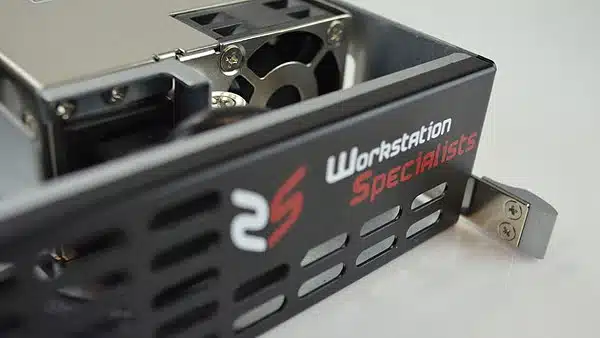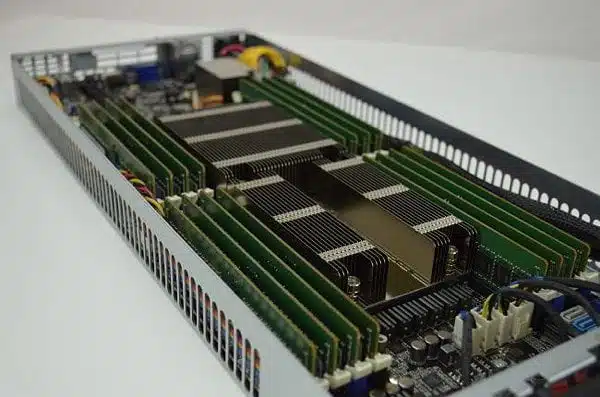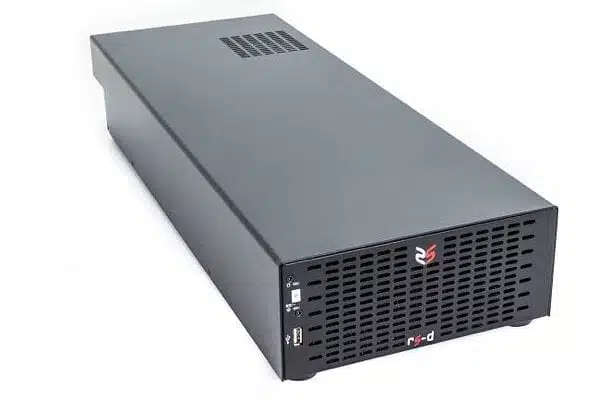Professionals who render images whether they work within the VFX Industry, 3D CAD Design or Architectural Design are all well aware of the frustrations and costs lengthy render times can cause. Solving this issue with a dedicated render farm often is viewed as a daunting, highly technical and complex task.
This doesn’t need to be the case, read on to find out seven reasons dedicated Rendering Solutions such as those sold here at Workstation Specialists can slash rendering times and give companies the ability to complete more projects quicker, all whilst saving you money.
1) Increase Rendering Performance
This one may sound obvious but the more processing power you can throw at a rendering task to quicker that task can be completed. The details of this however are a little more complicated. CPU rendering is usually performed by splitting an image into sections and one section is calculated by a single CPU thread. Each of these sections can be calculated simultaneously and therefore the more threads you have the better.
Most people’s workstations have a single CPU containing within the region of 8 to 20 threads. Our dedicated render nodes are based on Intel Dual Xeon Processor technology meaning 2 processors designed to have many Cores and Threads specifically for these types of workflows. For example a single render node at the time of writing can be fitted with up to 88 threads which is significantly higher than your average design workstation.
2) Scalability
The concept of a farm means that many machines can be pulled together to work on a specific tasks. The age old adage that “many hands make light work” is just as true for computers as it is for people. With a networked render farm many systems can be configured via simple render managment utilities on your workstation to split the task between them. Therefore with the same concept of more Cores and Threads increase performance. Combining many systems together now makes the sky the limit in terms of rendering power.

3) Keep Working Whilst You Render
One of the key frustrations people face when performing local renders, is that whilst a render job is in operation your workstation is working so hard, performance on other tasks drops to the point it makes the system unusable. This often means that your design application simply will not function leaving you with only one option. Make a cup of tea and wait.
With a networked render farm your workstation is left free of the rendering responsibility therefore unaffected, keeping you working and not waiting. Alternatively if you need that render as quickly as possible simply allocate your workstation the rendering job also and further increase you’re rendering output.
4) Optimise Your Modelling Workstations
If your workstation is no longer required for the rendering process then it can be optimised for the other aspects of your workflow which is usually 3D Design and Modelling. Unlike rendering this is a highly single threaded task and therefore the multi core systems that are good for rendering are not as good at modelling.
A Frequency Optimised workstation such as our WS-X range offers professionals the very best 3D Design and Modelling experience available today. With each core and thread optimised and professionally overclocked by our team of expert engineers to between 4-5GHz. This offers significantly better performance than your average workstation of around 2.6GHz-3.4GHz.
5) Smart Allocation of Rendering Resources
With a dedicated render farm on your network, resources will no longer have to go to waste. If you are part of a team that perform rendering tasks on local machines, then the processing power locked up in the other machines around your office are going un-utilised.
With a render farm this is not the case. You can configure your farm with the render management utility perfectly for your requirements. If the farm is going unused then a users is able to take full advantage the resource. Alternatively if multiple people wish to render at the same time then it can equally share the processing power available, or you can weight priority towards particular users / departments.

6) Remote Management
Although render nodes in a render farm are largely independent and once configured there is no need to interact with them directly. On occasion if you need to restart a node or change a setting the Workstation Specialists Render Node Range comes with hardware based remote management (IMPI) technology built directly in to the systems themselves.
This gives you an easy way to interact and manage your nodes remotely via your workstation. No need to plug in additional monitors or keyboards and mice. Simply access your nodes remote management utility via an app or web browser to check statistics, power on / off the machine or load the nodes desktop to configure as if you were directly connected to the machine.
7) Reliability
Reliability of your render nodes is of paramount importance. Without them you may miss deadlines or be unable to accept future projects costing your company money.
Our Enterprise grade Intel Dual Xeon render nodes are designed just for that. They are designed to run at 100% capacity 24/7 365 days a year which non specialised systems are simply not designed to do. In the unfortunate event a node does fail then our 3 Years full parts and Labour warranty has you covered, getting you back up and running as soon as possible.
The other advantage of a networks render farm is that due to it’s multi node nature. If one machine fails then the farm still carries on rendering. It may lose some performance for a short time whilst that node is being fixed but the other nodes keep your business running and earning.

Conclusion
There are many benefits to dedicated networked Intel Dual Xeon based render farm such as increased performance, more efficient workflows, higher reliability and this is not to mention to reduction in users frustrations. If you are concerned that these are just for the big production houses then take a look the Workstation Specialists Deskside render node. These systems offer the same benefits as a traditional rack render node without the need for racks, air-con units or server rooms. Still not convinced that network rendering is right for? Why not try out our Render Node ROI Calculator below to find out how much time and money you could save.
Calculate The Time and Money a Render Farm Could Save You
Our render node ROI calculator is a quick and easy tool to help you estimate the real world benefits your very own network render farm can have for you. Simply follow the simple steps below to find out how much computing power you need to get the performance you require.
• Step 1 – Enter the processor details of the workstation or render farm you currently use.
• Step 2 – Enter the processor details of the new workstation or render farm you are interested in.
• Step 3 – Review the time your new render farm could save you.
• Step 4 – Review the value in pound sterling your new render farm could save you.
In the table below we compare the overall processing performance of you current workstation or render farm against the new proposed render farm. We take the current time a single render takes your current system and estimate how long your new render farm is likely to take in comparison. Return to Step 2 and modify the settings to find the performance improvements you would like.
Enter the value in pound sterling rendering currently costs you or your company per hour. Expenses that are regularly considered a rendering cost are employee wages, electricity costs, project costs, render node rental costs, etc…
Your hourly render cost:
Please note these figures are to be used as an estimated guidline only. We also offer a bespoke one to one benchmarking/demonstration service where you can run/trial a render node with your exact projects/datasets for a true like for like comparison with your own/existing computer hardware. Please speak with our sales team for further details.
